Kid's Dentistry
 Because we emphasize on prevention, Children and Kid’s Dentistry is a priority.
Because we emphasize on prevention, Children and Kid’s Dentistry is a priority.
First Visit
We love to see your children and be a part of their safe dental home. We like to see infants to evaluate for frenectomies with changing time we do not want to wait longer till the first year mark to see a dentist which has been the norm. Prevention is key. Proper muscle function developments during the first year of life is the foundation.
Dr. Mirkal emphasizes on muscle development by incorporating good habits for infants. She makes recommendations for optimal muscle and jaw development, which done early on, will set your child to the right path of development.
Nutritional Counseling
Food not only provides nutrition, but also helps with muscle development. Dr. Mirkal will make important recommendations on eating habits, such as:
- eating firm healthy organic food and not soft mushy food
- eating with hand when possible for good oro-motor and sensory development especially in the first two years of life.
- avoiding baby food in pouches, pacifiers and proper baby led weaning methods.
She works closely with a holistic nutritionist to ensure the right diet for your child.
Cleaning, xrays, preventative sealants, ozone, Silver nitrate to halt decay on baby tooth are some common procedures.
Kids Early Orthodontics and Airway focused Dentistry in Children
Gopex (Good oral posture exercises)
It is a set of exercises to help the patient develop proper posture when the mouth is at rest. These are simple exercises like counting, reading, chewing and swallowing. Most importantly, they teach the importance of pause and nasal breathing and bringing attention and intention to it.
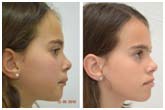
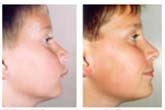
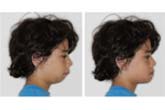
Forwardontics
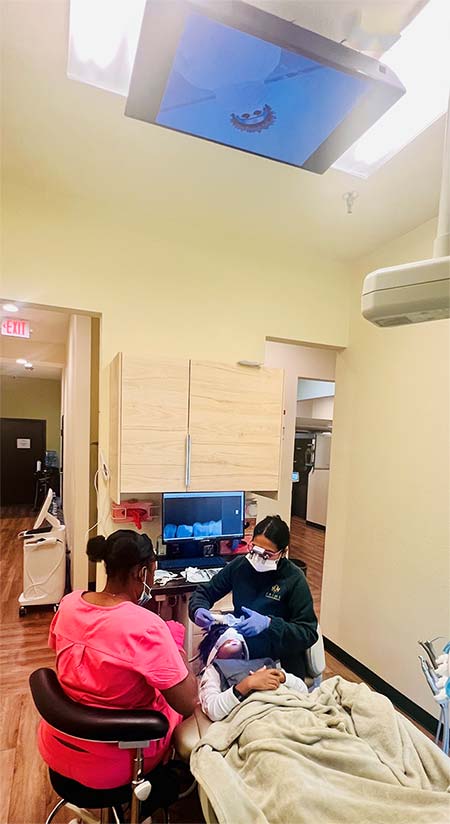 Combined with proper Forwardontic appliances to create enough width and length (forward) of the jaws, the results in improvement of health and facial appearance are dramatic. Forwardontics can produce optimal results when paired with GOPEX exercises.
Combined with proper Forwardontic appliances to create enough width and length (forward) of the jaws, the results in improvement of health and facial appearance are dramatic. Forwardontics can produce optimal results when paired with GOPEX exercises.
Sleep disordered Breathing:
Sleep Disordered Breathing (SDB) is an all-inclusive term for breathing difficulties, ranging from mild snoring to severe airway obstruction during sleep. When your child’s breathing is disrupted, his or her body recognizes the disruption much like choking, therefore, increasing the heart rate, raising the blood pressure, arousing the brain, ultimately disrupting sleep. The central issue of Sleep Disordered Breathing is a compromised airway. When a child’s airway is narrow, underdeveloped or constricted in any way, the child will struggle to receive enough oxygen at night and may resort to mouth breathing which compounds this issue.
Traditionally, there have been very few answers to treating this issue, Prime Integrative Dentistry is using Myobrace Appliance Therapy, along with adjunctive therapies to treat these issues in an integrative approach.
Sleep Disordered Breathing in children is a much more critical and common problem than what has previously been thought. SDB can manifest itself in a variety of symptoms that can be easily overlooked, misdiagnosed, and most unfortunately left untreated.
Airway Focused Dentistry for Kids
Sleep Disordered Breathing (SDB) is an all-inclusive term for breathing difficulties, ranging from mild snoring to severe airway obstruction during sleep. When your child’s breathing is disrupted, his or her body recognizes the disruption much like choking, therefore, increasing the heart rate, raising the blood pressure, arousing the brain, ultimately disrupting sleep. The central issue of Sleep Disordered Breathing is a compromised airway. When a child’s airway is narrow, underdeveloped or constricted in any way, the child will struggle to receive enough oxygen at night and may resort to mouth breathing which compounds this issue.
Traditionally, there have been very few answers to treating this issue, Prime Integrative Dentistry is now using Myobrace appliance therapy, along with adjunctive therapies to treat these issues in an integrative approach. Sleep Disordered Breathing in children is a much more critical and common problem than what has previously been thought. SDB can manifest itself in a variety of symptoms that can be easily overlooked, misdiagnosed, and most unfortunately left untreated.
How Can I Tell if My Child Has Sleep-Disordered Breathing?
Does your child’s breathing sound noisy? Loud snoring is one very apparent indication that your child may have Sleep-Disordered Breathing. Gasping and snorting sounds grinding teeth at night while your child sleeps may catch you off guard or even make you momentarily worried. These sounds stem from your child moving from a deeper sleep to a lighter (towards waking up) struggling to breathe.
Common Sleep Disorder Breathing Symptoms Include:
- ADD / ADHD
- Bedwetting
- Chronic Allergies
- Asthma
- Mouth Breathing
- Snoring
- Swollen Adenoids / Tonsils
- Frequent Headaches
- Teeth Grinding
- Frequently Waking Up
- Excessively Sweating While Asleep
- Restless Sleep
- Nightmares
- Irritability / Aggressive Behavior
- Difficulty in School Subjects of Math, Science, and Spelling
- Arrested Growth
- Daytime Drowsiness
- Dark Circles Under the Eyes
- Crowded, maligned teeth.
Understanding the Danger of Mouth Breathing
Mouth breathing is not the same as nasal breathing, and is a bodily compensation of airway insufficiency, often leads to a further compromise of the airway.
Negative Aspects of Mouth Breathing
- Can be a contributing factor to a compromised airway and in patients who require orthodontic treatment.
- The proper exchange of carbon dioxide and oxygen.
- Prevents the proper function of the tongue and other orofacial muscles that children need to speak, swallow, chew, and function properly.
- Can cause the delicate tissues of the tonsils and adenoids to swell and become enlarged further impacting a restricted airway.
DON’T WAIT. EARLY TREATMENT IS CRITICAL
When children are young, their bodies can adjust and mold easily, particularly in their mouth and their bone structure. We tackle SDB in children in an integrative fashion starting with a complete exam, screening for habits and symptoms.
Always correct habits by teaching them to correctly breathe, swallow, chew. We work closely with Oromyofunctional therapist and help you active a functional form. Because form always precedes function.
Myofunctional Appliance Therapy
Myobrace appliance therapy, myofunctional exercises along with other adjunctive interventions count for stage 1. Usually many symptoms are resolved by correction of oromyofunctional imbalances. Many kids may need a stage 2 which may involve expansion of jaws or growth in a desired direction. This early intervention of stage 1, 2 prevents the need for extraction orthodontics which is our ultimate goal.
Dr. Mirkal is a myobrace appliance provider which is a proprietary advanced orthodontic/orthopedic appliance – BPA, Silicone/ Latex Free and is FDA cleared. The myobrace appliance treatment is safe, pain free, non-invasive nonsurgical, preventative and effective. Apart from helping with SBD symptoms myobrace system will correct crooked and maligned teeth.
Stage two appliance may be a fixed appliance with a facebow or a removal appliance that can be worn during day and night,depending upon the situation on hand Dr. Mirkal will make the clinical judgment.
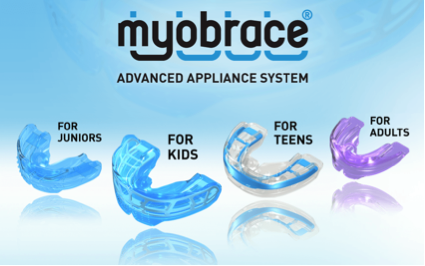
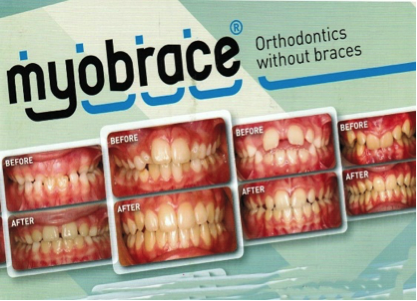
Growth Appliance for Kids
Sleep Disordered Breathing
Craniofacial development in children starts early on and it is critical to intervene as early as possible to take advantage of the chance to manipulate normal skeletal growth occurring in children. By the age of 4, 60% of facial growth is complete. By the age of 6, 80% of facial growth is complete. By the age of 11-12 90% of facial growth is completed and the second premolars have erupted. It is important to introduce orthotropic, orthopedic interventions, which harness the ability to remold skeletal growth patterns. Growth appliance is a full-fledged functional and TMJ appliance in kids aged between 6-9 years. Many children in this age group experience headaches, and TMJ symptoms but rarely verbalize it. Other symptoms to watch for: Problems with teeth alignment – crowded or crooked teeth, bite problems, teeth don’t meet correctly, underbite or overbite, facial asymmetry, frequent headaches, snoring, open mouth breathing and short attention span/easily distracted. This appliance will help remold the downward growth vector to a more horizontal growth (long flat face versus more fuller attractive forward face). Orthodontic interventions done later on will be relatively straight forward and less invasive after Growth Appliance. Listen to mom talk about reasons to seek help for her child. Does this sound familiar?
